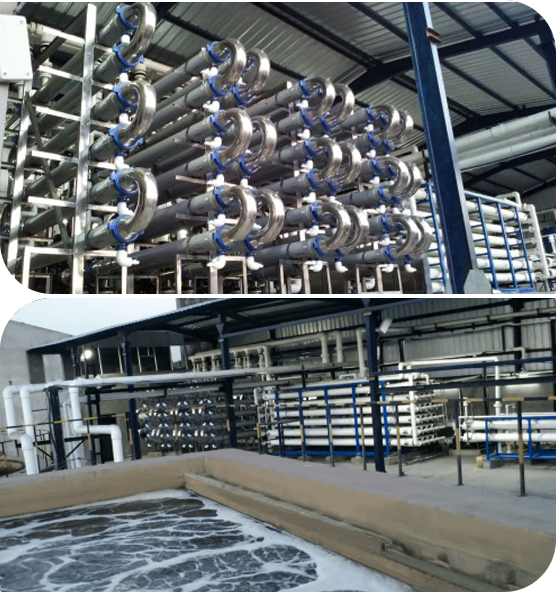
Waterman Engineers Australia has become the top companies of Zero Liquid Discharge technique. A ZLD process is usually a procedure process which is utilized to eliminate all the liquid squander from a method. The objective of ZLD water procedure is to lessen wastewater economically and develop potable drinking water which is match for normal use. Zero discharge procedure is a sophisticated remedy method that comprises ultrafiltration, reverse osmosis, evaporation and fractional electro deionization. And we've been a properly-identified provider of ZLD programs.
In many Industries, for instance electrical power, oil & fuel, chemical compounds, mining and Other people, a great deal of wastewater is generated that needs to be managed. Conventionally, this discharge of wastewater is done by means of a plant outfall to a floor h2o human body like an evaporation pond, or in some cases deep properly injected. These practices cause many environmental worries by the general public in many areas of the earth, as water is actually a scarce resource and its administration ought to be monitored. These problems have resulted in the establishment of ZLD processes by a lot of industries to reduce their environmental footprint and enhance sustainability. And, Waterman Engineers Australia are greatest ZLD suppliers yow will discover for this system.
Qualities OF ZERO LIQUID DISCHARGE Technique
The Houses of the Zero Liquid Discharge procedure can vary with regards to the precise design and technologies employed. Even so, some prevalent Houses of ZLD devices involve:
H2o Conservation: Considered one of the first aims of ZLD programs is usually to conserve water by reducing the discharge of liquid squander in to the surroundings.
Higher H2o Purity: ZLD units are built to make large-high quality h2o that may be absolutely free from impurities and contaminants, which makes them suitable for use in lots of industrial processes.
Flexibility: ZLD techniques are often built to accommodate a wide variety of enter liquid streams, which makes them multipurpose and suited to use in different industries.
State-of-the-art Wastewater Remedy: Zero liquid discharge systems use State-of-the-art wastewater therapy strategies to eliminate impurities and contaminants within the effluent, generating superior-top quality drinking water.
Squander Reduction: ZLD methods enable decrease waste by cutting down the volume of liquid waste that needs to be disposed of and by manufacturing a concentrated, solid waste content that could be safely disposed of.
Vitality Performance: ZLD units may be Strength-intense mainly because of the higher Vitality necessities of evaporation and various wastewater therapy processes. Nevertheless, improvements in technological innovation are building Zero liquid discharge units extra Electrical power-efficient and price-helpful.
Waterman Engineers Australia manufactures Zero Liquid Discharge (ZLD) units meant to clear away all liquid squander, aiming to supply potable water and reduce environmental impact. Their ZLD units ordinarily include things like ultrafiltration, reverse osmosis, evaporation, and fractional electro deionization. Critical technologies used are Slipping Film Brine Concentrators, Compelled Circulation Crystallizer, and Many others, that has a two-stage process of pre-focus and evaporation/crystallization to Recuperate and reuse h2o. These programs are adaptable to various industries, emphasizing h2o conservation, substantial water purity, waste reduction, and energy performance. Technical requirements are different and customizable, considering things like h2o supply, movement rate, and feed h2o high-quality.
The need for Zero Liquid Discharge (ZLD) devices occurs through the requirement to address environmental fears connected with h2o scarcity and pollution. In industries like electricity, oil & fuel, and mining, huge quantities of wastewater are created. Historically, this wastewater is discharged into bodies of drinking water, producing pollution and depleting thoroughly clean drinking water means. ZLD systems goal to reduce these impacts by dealing with and recycling wastewater in just the industrial procedure, therefore conserving drinking water, cutting down squander, and endorsing sustainability.
When considering the specialized specs of a Zero Liquid Discharge (ZLD) program, critical features to focus on include the water resource it will treat, the system's flow price, the quality of feed h2o, the levels of cure included, the recovery charge of water, techniques for focus disposal, products of development, running situations, and method automation and Manage. These factors make sure the technique's efficiency, durability, and performance Zld System Manufacturer Zero Liquid Discharge System in dealing with and recycling industrial wastewater.
Zero Liquid Discharge (ZLD) plants give Added benefits for example water conservation, squander reduction, and pollution avoidance, contributing to environmental sustainability. They're relevant in industries like electrical power technology, oil and gasoline, chemicals, and mining, wherever they help in taking care of industrial wastewater efficiently, reducing the ecological footprint, and complying with rigorous environmental laws. These units are critical in areas experiencing h2o scarcity and for industries aiming to enhance their sustainability and operational performance.
FAQs to get a Zero Liquid Discharge (ZLD) process frequently tackle its operational concepts, Expense-success, maintenance demands, environmental impact, applicability across a variety of industries, and regulatory compliance. These thoughts aid end users understand the procedure's Rewards, complex demands, and suitability for his or her specific wastewater management wants.
one. Zero Liquid Discharge (ZLD) is usually a wastewater treatment method intended to do away with all liquid squander.
two. The process's factors are affected by the precise industrial course of action, wastewater composition, and regulatory prerequisites.
three. Effluent procedure crops take out pollutants from textile effluents to circumvent environmental contamination.
four. Strengths involve h2o conservation, pollution reduction, and regulatory compliance.
5. The objective is to attenuate environmental effects by recycling h2o and cutting down waste.
6-nine. Effluent treatment method vegetation are stages in wastewater procedure: Most important (Bodily separation), secondary (biological treatment), and tertiary (advanced procedure).
10. Unit functions contain filtration, sedimentation, Organic cure, and disinfection.
11. Restricting parameters are variables that have an effect on the therapy's performance, like pH and contaminant concentration.
twelve. Design and style considerations involve circulation price, effluent composition, and wished-for good quality of treated drinking water.